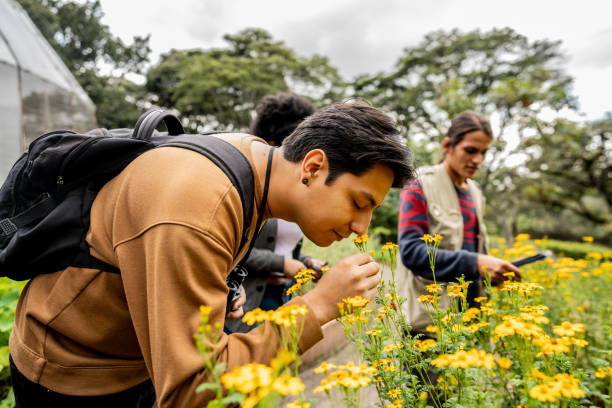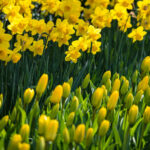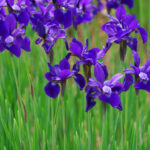Here’s an exciting and immersive Garden Exploration Activity that fosters a deep connection with the natural environment of your garden. This activity, which can be adapted for both children and adults, encourages learning, exploration, and creativity while providing participants with a relaxing and enjoyable experience. Perfect for garden lovers, families, or small groups, the Garden Discovery Adventure will help visitors understand the beauty, diversity, and life cycles present in a garden.
Garden Discovery Adventure
A Fun, Educational, and Interactive Garden Experience
Introduction:
Gardens are magical spaces where plants, flowers, and even wildlife flourish together in a balanced ecosystem. Whether you have a small urban garden or a sprawling backyard sanctuary, gardens can offer incredible opportunities to observe and engage with nature. This Garden Discovery Adventure activity combines exploration, education, creativity, and sensory experiences to deepen participants’ appreciation for the flora and fauna around them.
Before starting the adventure, welcome your participants and introduce them to the layout of the garden. Share some fun or educational facts about the plants, flowers, or garden structures they’ll encounter during the activity. By setting the stage with an engaging introduction, participants will be excited to dive into the adventure.
1- Garden Scavenger Hunt:
A scavenger hunt is an excellent way to introduce participants to the diversity of plant life in your garden. This hunt focuses on observation, learning, and creativity, allowing participants to find items and answer questions that stimulate both curiosity and knowledge.
Materials:
- Scavenger hunt checklists (with space for writing and drawing)
- Pencils or pens
- Small collection baskets (for certain items like leaves or flower petals)
Instructions:
Give each participant or group a scavenger hunt checklist with a list of challenges. The challenges will prompt them to explore the garden in detail, paying attention to colors, shapes, textures, and scents. Each challenge should encourage a different type of observation, so participants learn more about the garden while having fun.
Sample Scavenger Hunt List:
- Find Something Green: Find three different shades of green in the garden. This could be leaves, grass, or vines. Write down what you found.
- Spot a Pollinator: Observe the activity of pollinators like bees, butterflies, or birds. How are they interacting with the flowers? Draw or write about what you saw.
- Leaf Texture Test: Find two leaves with different textures—one smooth and one rough. Feel each leaf and describe how they feel. Try to guess what plant they belong to!
- Color Wheel: Find as many different flower colors as you can. Look for red, blue, yellow, purple, and any others. Can you find a flower in every color of the rainbow?
- Scent Detectives: Smell at least two different flowers or herbs in the garden. Can you describe their scents? Are they sweet, spicy, or minty?
- Find an Unusual Plant: Search the garden for a plant or flower that stands out—whether it’s because of its shape, size, or unique color. Why does it catch your eye?
- Collect a Fallen Leaf or Petal: Gather a leaf or flower petal that has naturally fallen to the ground. Try to identify what plant or flower it came from.
- Life Cycle Spotting: Can you find a plant in different stages of growth? Find a seedling, a budding flower, and a fully grown plant.
Objective:
The scavenger hunt encourages active participation and thoughtful observation. By interacting with different plants and insects, participants will learn about the garden’s biodiversity and how each element plays a role in the overall ecosystem.
2- Nature Art Project:
In this creative section of the activity, participants will gather natural materials from the garden to create beautiful, temporary pieces of art inspired by the environment around them.
Materials:
- Fallen leaves, petals, twigs, and small stones (participants will gather these from the garden)
- Blank canvas or construction paper (optional, for a base)
- Glue or double-sided tape (optional, if you want the art to be permanent)
Instructions:
Once participants have completed the scavenger hunt, ask them to use the natural materials they’ve found—like leaves, flower petals, and twigs—to create a piece of nature art. This could be a pattern, picture, or abstract design laid out on the ground or assembled on paper. For example, they could arrange colorful petals in a spiral pattern or create a leaf collage.
Encourage creativity by asking participants to think about how colors, textures, and shapes work together in their art. If you want to make the art project more structured, provide a theme, such as “The Seasons” or “Garden Creatures.”
Once the art is completed, everyone can take turns presenting their artwork and explaining the choices they made. This not only encourages creativity but also helps participants appreciate the beauty of nature’s colors and textures.
3- Sensory Garden Exploration:
This activity focuses on the five senses—sight, sound, touch, smell, and taste—allowing participants to engage fully with the garden in a mindful way.
Instructions:
Guide participants through the garden, stopping at different areas where they can experience each sense:
- Sight: Ask participants to close their eyes and then open them to take in the colors and shapes around them. What catches their eye first? Have them observe how sunlight plays on the leaves or how flowers of different colors contrast with one another.
- Sound: Take a few moments to listen to the sounds of the garden. Can they hear the buzzing of insects, the chirping of birds, or the rustling of leaves in the breeze? Ask participants to write down or share the sounds they hear.
- Touch: Have participants gently touch different plants and textures. Is the grass soft or prickly? Is the bark of a tree rough or smooth? Ask them to describe what they feel in their hands.
- Smell: Lead the group to different fragrant flowers or herbs, like lavender or rosemary. Ask them to take a deep breath and describe the smells they encounter.
- Taste: If your garden has edible plants, such as herbs, fruits, or vegetables, invite participants to taste something straight from the garden. Make sure they only taste safe-to-eat plants that you’ve pointed out! You can also offer a small snack made from garden produce to finish off this sensory experience.
Objective:
This mindful sensory walk encourages participants to slow down and connect deeply with the garden, noticing details they might otherwise overlook.
4- Garden Journaling:
To conclude the Garden Discovery Adventure, participants will take time to reflect on their experiences by journaling or drawing their observations.
Materials:
- Journals or blank paper
- Pens or colored pencils
Instructions:
Ask participants to find a quiet spot in the garden to sit and reflect. Provide prompts to guide their journaling, such as:
- “What was your favorite part of the garden today?”
- “What plant or animal surprised you the most?”
- “How did the garden make you feel?”
Alternatively, participants can draw a picture of something they observed, such as a flower, a plant’s life cycle, or a bird they saw.
Objective:
Journaling allows participants to capture their thoughts and feelings about the garden, fostering a deeper connection to nature. It’s also a peaceful way to wind down the activity.
Conclusion:
The Garden Discovery Adventure is an engaging way for participants to explore the garden through a combination of observation, creativity, and sensory experiences. Whether they are collecting items during the scavenger hunt, creating nature art, or quietly reflecting in their journals, participants will leave with a greater appreciation for the natural world and the garden’s role in nurturing life.
This activity is perfect for garden enthusiasts of all ages and can be adapted to suit various garden settings, making it a versatile option for families, school groups, or community events.







